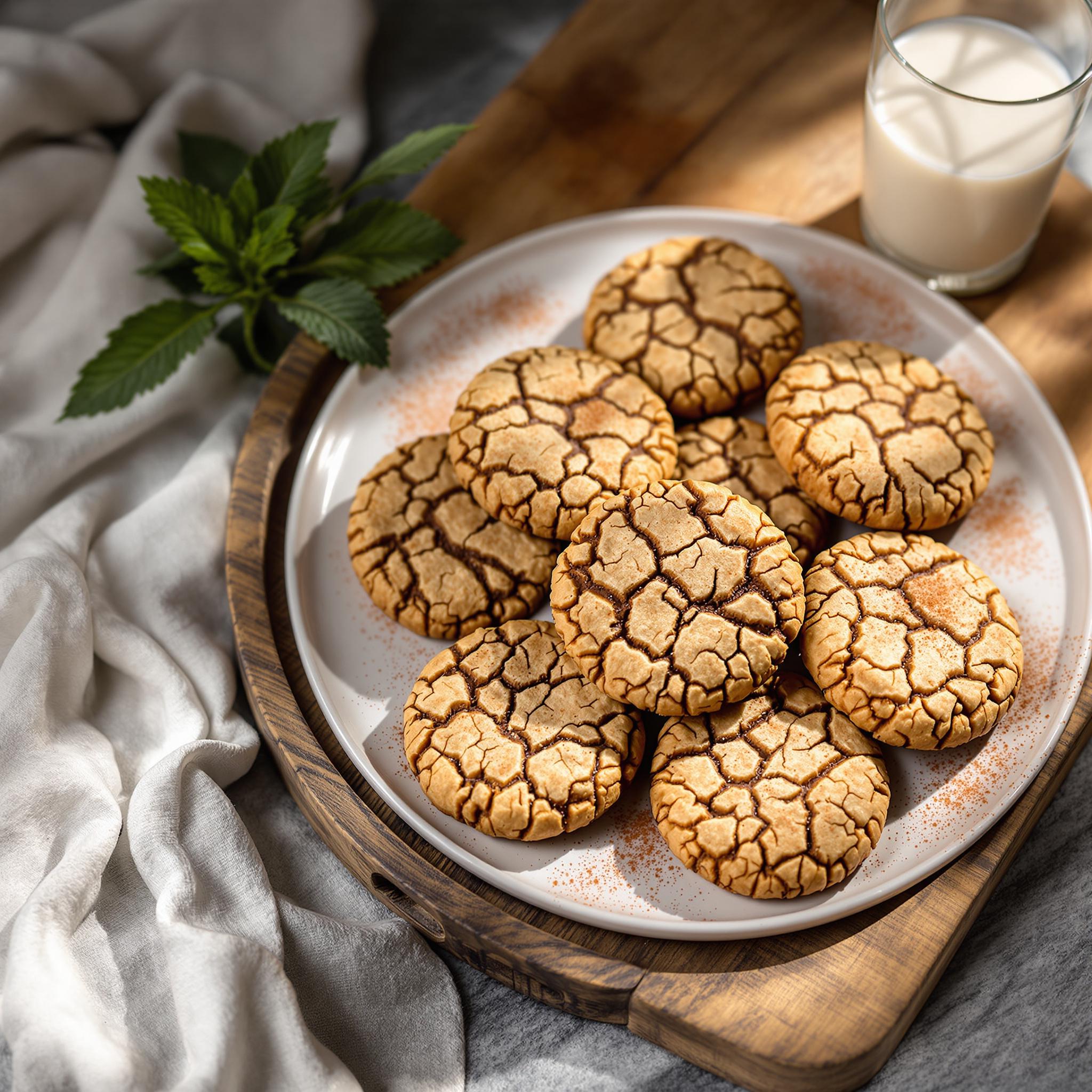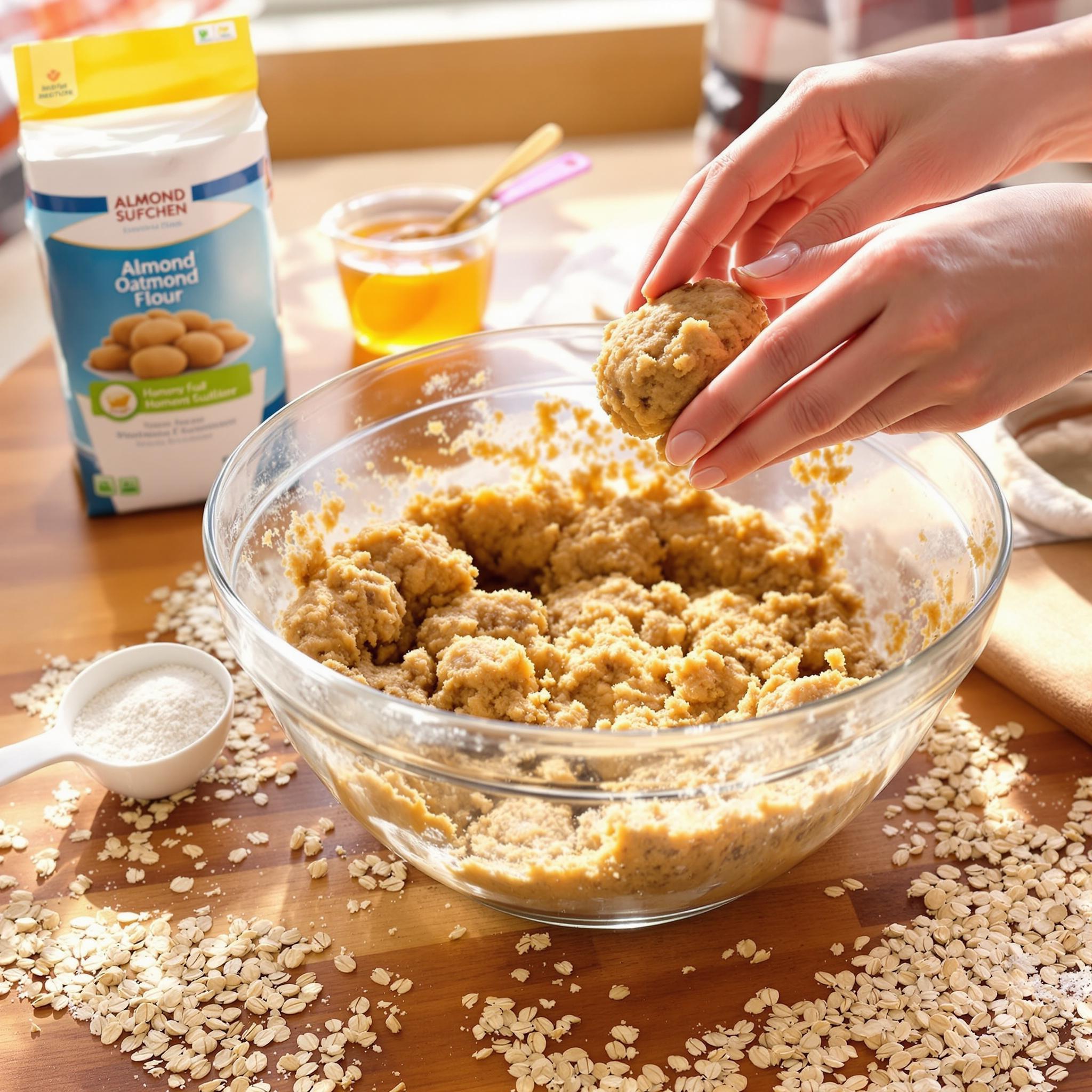Introduction to Sugar-Free Oatmeal Cookies
There’s something magical about the aroma of freshly baked cookies wafting through the house. But what if I told you that you can enjoy a batch of warm, chewy cookies without the sugar guilt? Enter Sugar-Free Oatmeal Cookies, my go-to recipe for satisfying sweet cravings while keeping things healthy. These cookies are not only delicious but also packed with wholesome ingredients like oats and natural sweeteners. Whether you’re baking for family, friends, or just yourself, this recipe is sure to become a favorite.
The Story Behind Sugar-Free Oatmeal Cookies
I first stumbled upon the idea of sugar-free oatmeal cookies when I was looking for healthier dessert options for my kids. Traditional oatmeal cookies are already a classic, but I wanted to make them more nutritious without sacrificing flavor. After several trials (and a few flops!), I perfected this recipe. It combines the nutty texture of oats with the subtle sweetness of natural alternatives like honey or maple syrup. Over time, these cookies have become a staple at our family gatherings, and everyone loves them—even those who aren’t counting their sugar intake!
Why You’ll Love This Recipe
What makes these sugar-free oatmeal cookies stand out is their balance of taste and health. They’re soft, chewy, and full of flavor, yet they skip refined sugars entirely. Plus, they’re incredibly easy to make, even for beginner bakers. Whether you’re looking for a diabetic-friendly treat or simply want to cut back on processed sugars, this recipe ticks all the boxes.
Perfect Occasions to Prepare Sugar-Free Oatmeal Cookies
These cookies are perfect for any occasion! Whip up a batch for breakfast, pack them in lunchboxes, or serve them as a guilt-free dessert after dinner. They’re also great for holiday cookie exchanges, potlucks, or as a thoughtful homemade gift. Honestly, there’s no wrong time to bake these delightful treats.
Ingredients for Sugar-Free Oatmeal Cookies
- 1 cup rolled oats
- 1/2 cup almond flour (or whole wheat flour)
- 1/4 cup coconut oil (melted)
- 1/4 cup honey or maple syrup
- 1 large egg
- 1 teaspoon vanilla extract
- 1/2 teaspoon baking soda
- 1/4 teaspoon salt
- 1/2 cup raisins or chopped nuts (optional)
Substitution Options
If you’re missing an ingredient or want to experiment, here are some substitutions:
- Use oat flour instead of almond flour for a gluten-free option.
- Swap honey with agave nectar or stevia for a lower glycemic index.
- Replace coconut oil with unsalted butter or olive oil.
- Add dark chocolate chips instead of raisins for a richer flavor.
Preparation
Step 1: Preheat and Prep
Begin by preheating your oven to 350°F (175°C). Line a baking sheet with parchment paper to prevent sticking. In a mixing bowl, combine the rolled oats and almond flour. The combination of these two creates a hearty base for your cookies, giving them structure and a satisfying texture. Pro tip: Toast the oats lightly in a dry skillet before using them—it enhances their nutty aroma and adds depth to the flavor profile.
Step 2: Mix Wet Ingredients
In another bowl, whisk together the melted coconut oil, honey (or maple syrup), egg, and vanilla extract. This mixture will be glossy and fragrant, setting the stage for the cookie dough. Be sure to mix thoroughly so the wet ingredients emulsify properly, ensuring even distribution throughout the batter. If you’re using a stand mixer, this step takes mere seconds!
Step 3: Combine Dry and Wet Ingredients
Pour the wet ingredients into the bowl with the dry ingredients. Stir until everything is well combined. At this point, the dough should feel slightly sticky but firm enough to hold its shape. Fold in optional add-ins like raisins or chopped nuts for extra texture and flavor. Pro tip: Let the dough rest for 5-10 minutes—it allows the oats to absorb moisture, making the cookies softer.
Step 4: Shape and Bake
Scoop tablespoon-sized portions of dough onto the prepared baking sheet, spacing them about 2 inches apart. Flatten each ball slightly with the back of a spoon or your fingers. Pop the tray into the oven and bake for 10-12 minutes, or until the edges turn golden brown. Keep an eye on them; overbaking can lead to dry cookies. Once done, let them cool on the tray for a few minutes before transferring to a wire rack.
Chef’s Tip
To elevate your sugar-free oatmeal cookies, sprinkle a pinch of cinnamon or nutmeg into the dough. These spices complement the natural sweetness of the ingredients and add a cozy, autumnal touch to every bite.
Time Required
Prep Time: 10 minutes | Cooking Time: 12 minutes | Total Time: 22 minutes
Nutritional Information
Per serving (1 cookie): Calories: 80 | Protein: 2g | Carbohydrates: 10g | Fat: 4g | Fiber: 1g
Extra Information
Did you know that oats are one of the most nutrient-dense grains? They’re rich in fiber, antioxidants, and essential minerals like magnesium and iron. Including them in your diet can support heart health and improve digestion.
Necessary Tools
- Mixing bowls
- Whisk or electric mixer
- Baking sheet
- Parchment paper
- Spatula
Storage Instructions
Once your cookies have cooled completely, store them in an airtight container at room temperature for up to 5 days. For longer storage, place them in the refrigerator, where they’ll stay fresh for up to 2 weeks. Freezing is another excellent option—wrap individual cookies in plastic wrap and freeze for up to 3 months. When ready to enjoy, simply thaw at room temperature or reheat briefly in the microwave.
Tips and Tricks
Here are a few tricks to take your sugar-free oatmeal cookies to the next level:
- Chill the dough for 15-20 minutes before baking to prevent spreading.
- Use a small ice cream scoop for uniform cookie sizes.
- Experiment with different mix-ins like shredded coconut or dried cranberries.
Serving Suggestions
Pair these cookies with a glass of almond milk or a hot cup of tea for a comforting snack. For a fun twist, crumble them over yogurt or ice cream for added crunch and flavor.
Healthier Alternatives for the Recipe
Looking to customize your cookies further? Here are six variations:
- Vegan Version: Replace the egg with a flaxseed “egg” (1 tbsp ground flaxseed + 2.5 tbsp water).
- Keto-Friendly: Use almond flour exclusively and add sugar-free chocolate chips.
- Protein-Packed: Add a scoop of protein powder to the dough.
- Fruit-Infused: Swap raisins for diced apples or blueberries.
- Spiced Delight: Increase the amount of cinnamon and add a dash of cloves.
- Nut Lover’s Dream: Load up on pecans, walnuts, or almonds.
Common Mistakes to Avoid
Mistake 1: Overmixing the Dough
Overmixing can make your cookies dense instead of light and chewy. To avoid this, stir just until the ingredients come together. Remember, less is more when it comes to mixing cookie dough!
Mistake 2: Skipping Rest Time
Resting the dough might seem unnecessary, but it helps the oats absorb moisture, resulting in softer cookies. Always give your dough a few minutes to relax before shaping.
Mistake 3: Baking Too Long
Overbaked cookies lose their chewiness and become dry. Set a timer and check for doneness around the 10-minute mark. The cookies should look set but still pale in the center.
Frequently Asked Questions
Can I use steel-cut oats instead of rolled oats?
No, steel-cut oats won’t work in this recipe because they’re too hard and won’t soften properly during baking. Stick to rolled oats for the best results.
Yes, since they’re made with natural sweeteners and no refined sugars, they’re a better choice for people managing blood sugar levels. However, portion control is key.
Ensure all your ingredients, especially the oats, are certified gluten-free. Almond flour works perfectly as a substitute for regular flour.
Can I freeze the dough?
Absolutely! Portion the dough into balls, freeze them on a tray, then transfer to a freezer bag. Bake directly from frozen, adding a couple of extra minutes to the baking time.
What’s the best way to measure oats?
For accuracy, weigh your oats using a kitchen scale. If you don’t have one, fluff the oats with a spoon before scooping and leveling with a knife.
Do I need to grease the baking sheet?
No, lining the sheet with parchment paper eliminates the need for greasing and ensures easy cleanup.
Can I reduce the sweetness?
Yes, adjust the amount of honey or maple syrup according to your preference. Start with less and taste the dough before baking.
This could happen if the dough was too warm or if you used melted butter instead of solid fat. Chill the dough before baking to fix this issue.
Can I double the recipe?
Of course! Just ensure your bowls and tools are large enough to accommodate the increased quantities.
Stored properly, they’ll stay fresh for up to 5 days at room temperature or 2 weeks in the fridge.
Conclusion
With their wholesome ingredients and irresistible taste, sugar-free oatmeal cookies are a must-try for anyone seeking a healthier treat. Whether you’re baking for yourself or sharing with loved ones, this recipe promises to delight. So grab your apron, gather your ingredients, and get ready to create a batch of cookies that’s as nourishing as it is delicious!

Equipment
- Mixing bowl
- Whisk
- Spatula
- Baking sheet
- Parchment paper
Ingredients
- 1 cup rolled oats
- 1/2 cup almond flour
- 1/4 cup coconut oil melted
- 1/4 cup honey or maple syrup
- 1 large egg
- 1 tsp vanilla extract
- 1/2 tsp baking soda
- 1/4 tsp salt
- 1/2 cup raisins or chopped nuts (optional)
Instructions
- Begin by preheating your oven to 350°F (175°C). Line a baking sheet with parchment paper to prevent sticking. In a mixing bowl, combine the rolled oats and almond flour. The combination of these two creates a hearty base for your cookies, giving them structure and a satisfying texture.
- In another bowl, whisk together the melted coconut oil, honey (or maple syrup), egg, and vanilla extract. This mixture will be glossy and fragrant, setting the stage for the cookie dough. Be sure to mix thoroughly so the wet ingredients emulsify properly, ensuring even distribution throughout the batter.
- Pour the wet ingredients into the bowl with the dry ingredients. Stir until everything is well combined. Fold in optional add-ins like raisins or chopped nuts for extra texture and flavor. Let the dough rest for 5-10 minutes—it allows the oats to absorb moisture, making the cookies softer.
- Scoop tablespoon-sized portions of dough onto the prepared baking sheet, spacing them about 2 inches apart. Flatten each ball slightly with the back of a spoon or your fingers. Pop the tray into the oven and bake for 10-12 minutes, or until the edges turn golden brown. Once done, let them cool on the tray for a few minutes before transferring to a wire rack.


